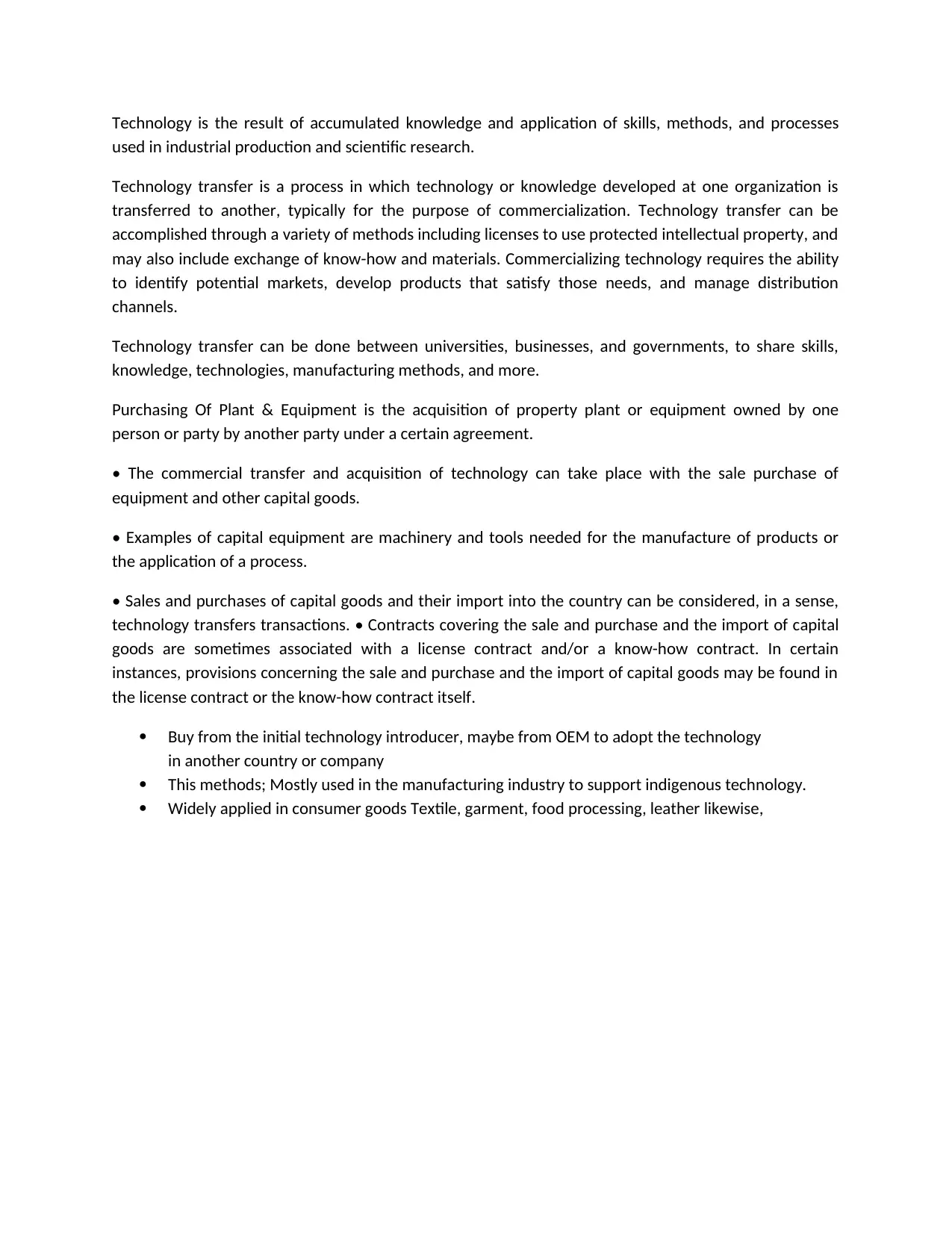Technology Transfer and Equipment Acquisition: A Detailed Report
VerifiedAdded on 2022/09/14
|1
|325
|25
Report
AI Summary
This report examines the processes of technology transfer and equipment acquisition, focusing on how knowledge and technologies are shared and utilized for commercial purposes. It covers the transfer of technology from one organization to another, including the use of licenses and the exchange of know-how. The report highlights the importance of identifying markets, developing products, and managing distribution channels. It also discusses the role of capital goods, such as machinery and tools, in facilitating technology transfer, and the significance of contracts and purchases in the process. The report mentions the role of original equipment manufacturers (OEMs) and the manufacturing industry in technology adoption, including examples from the textile, garment, food processing, and leather industries.
1 out of 1






![[object Object]](/_next/static/media/star-bottom.7253800d.svg)